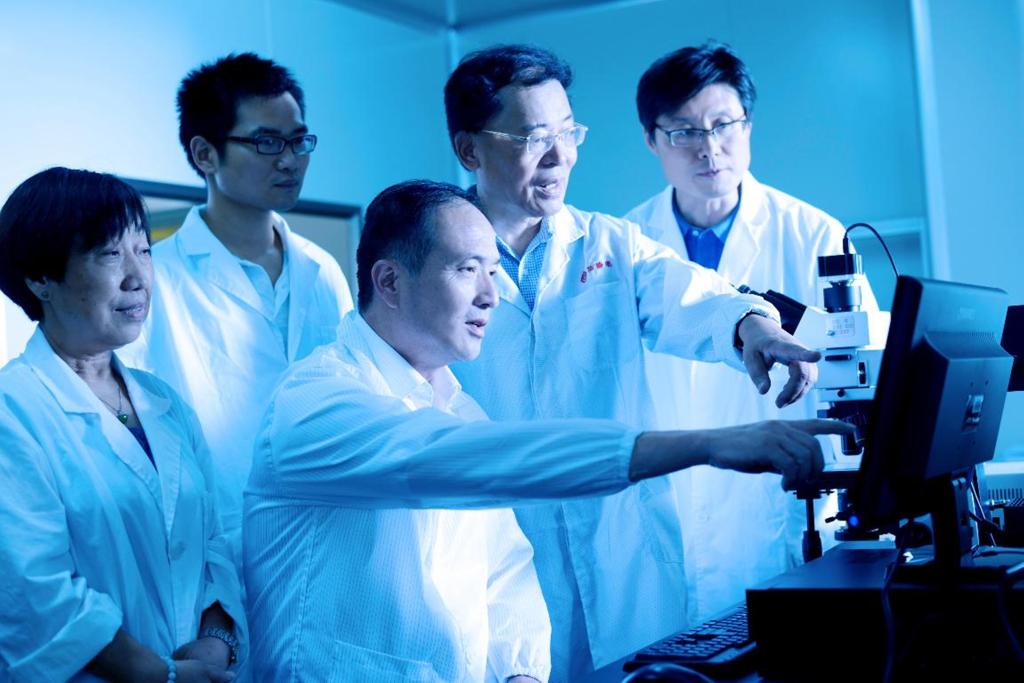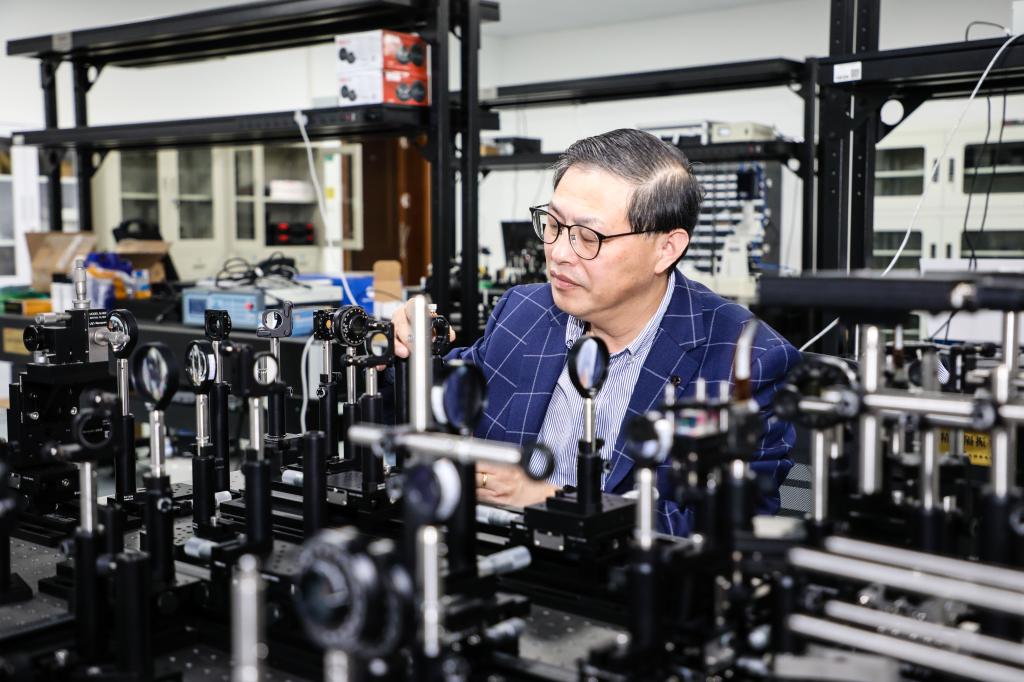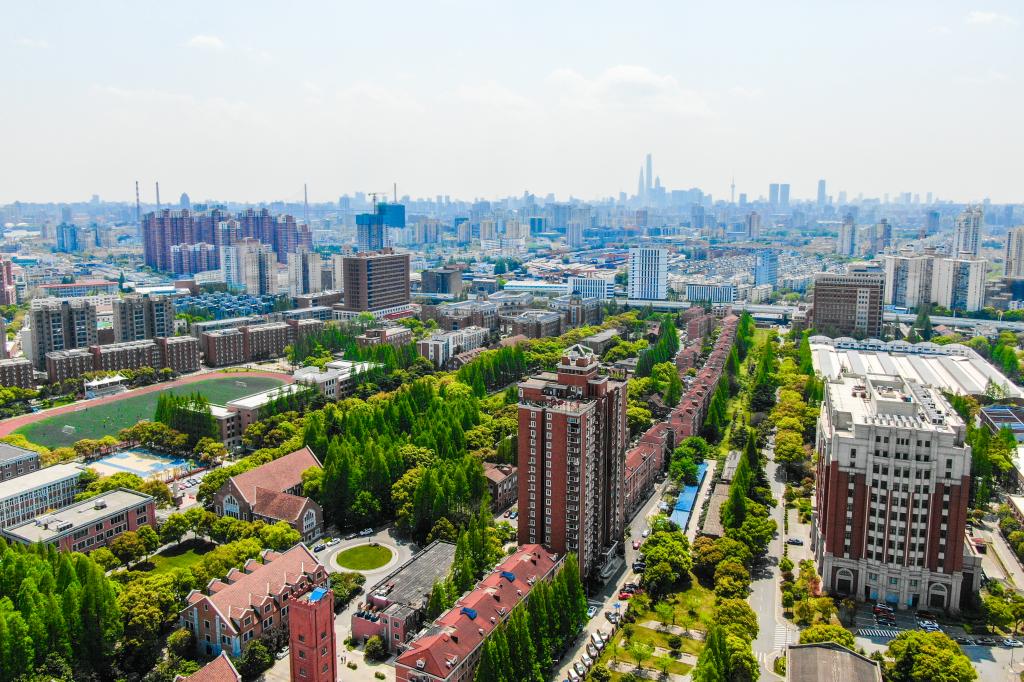Hosted by Shanghai Education Human Resource Exchange & Service Center, undertaken by USST (University of Shanghai for Science and Technology) , Shanghai International Young Scholar Forum of Universities & Third Hujiang International Young Scholars Forum of University of Shanghai for Science and Technology has become a grand event for globally young outstanding talents. Adopting the form of the special report online and offline, academic discussion, and human resource negotiation, circling around the international academic frontier and topics about the discipline of Optical Engineering, this forum is exclusively designed to build an academic communication platform for outstanding young scholars in the field of Optical Engineering and to strengthen their understanding of the policy about USST’s development, disciplinary construction, scientific research and faculty team, through which more global talents are gathered for USST to build a high-level local university.
Academic Area
Young Scholars Forum can be divided into one academician forum and six sub-forums. The research areas at the sub-forums include Extreme Optical Manufacture, Terahertz Science and Technology, Photonics Chip Technology, Artificial-Intelligence Nanophotonics, Ultra-precision Optical Manufacturing, Ultrafast Nonlinear Optics, Precision Spectral Detection Technology. Other interdisciplinary research areas include Control Science and Engineering, Testing and Information Engineering, Computer Science and Technology. All young outstanding talents at home or abroad are welcome to the forum.
Application Conditions
(1) Under 40 years.
(2)Acquired or will soon obtain a doctoral degree at a well-known university, or still work in a famous university, a research institute, and a R&D center of well-noted enterprise at home or abroad.
(3)Have acquired certain results in the research area or have good development potential and have the ambition to do more academic innovations and findings.
Application Methods
(1)Before Oct 15, 2021, complete online registration and submit application (please scan the code below)

(2)Before Oct 20, 2021, the university will review the applicant's qualifications and issue invitations and online account information to the forum.
Schedule
Oct 22th(afternoon):Check-in and system test
Oct 23th (morning): Opening Ceremony and Main Forum Special Report
Oct 23th (afternoon): Sub-forum Academic Seminar & person-to-person negotiation
Contact information
Contact: Mr. Wei Liu,Mr. Peng Liu
Tel: 021-55272982
E-mail: gdyb@usst.edu.cn
Add: Room 1017, OECE Building, University of Shanghai for Science and Technology, No.580 JUngong Road, Yangpu District, Shanghai
P.C.:200093
Form
During the forum, all scholars should attend online meeting.
Introduction of Optical Engineering
The discipline of Optical Engineering of University of Shanghai for Science and Technology, led by Professor Zhuang Songlin, the famous optical expert and academician of Chinese Academy of Engineering, and Professor Gu Min, foreign academician of Chinese Academy of engineering, joins as full-time, can be traced back to the discipline of Optical Instruments established in 1960. In 1981, it was conferred the right to offer master's degree programs. In 1998, it was conferred the right to offer doctoral degree programs. In 2001, it was listed as a key discipline of the Shanghai Municipal Education Commission. In 2005, it was listed as the key discipline of Shanghai. In 2007, the Optical Engineering Postdoctoral Research Station was set-up. In 2009, the discipline was listed as the National Key Discipline (cultivating stage). In the same year, one of the doctoral dissertations of the discipline won the award of the Top 100 National Excellent Doctoral Dissertations. In 2012, another doctoral dissertation won the award nomination of the Top 100 National Excellent Doctoral Dissertations. In 2015, Optical Engineering was approved as “the Peak Discipline” of Shanghai and was rated as excellent in the “Peak Discipline” accreditation in 2017. The discipline ranked 10th (first in Shanghai) in the national discipline accreditation in 2012, and ranked B+ (first in Shanghai) in the fourth-round national discipline accreditation conducted by the Ministry of Education in 2017.
The discipline of Optical Engineering enjoys good facilities, including the Optical Instruments and System Engineering Center of Ministry of Education, the Key Laboratory of Photoelectric Precision Testing Technology for Machinery Industry, the Shanghai Key Laboratory of Modern Optical System, the Shanghai Ultra-Precision Optical Machining and Testing Service Platform, etc. It is the President Unit of China Instrument and Control Society, and the affiliated institution of the China National Center for Quality Supervision and Test of Optical Instrument, the National Standardization of Optics and Photonics Committee, the Committee of Engineering Optics of Chinese Optical Society, the Optical Instrument Branch of China Instrument and Control Society and the China Instruments Manufactures Association.
The discipline owns a faculty team in which there are 120 including 2 academicians from Chinese academy of engineering, 33 talents at a national or ministerial level. Those teachers who have studied abroad account for 54% of the total. The construction of the discipline aims to develop high-quality talents and leading innovation research bases for Optical Engineering. The discipline puts focus on the artificial-intelligence nano-photonics, terahertz science and technology, ultra-precision optical manufacturing and testing, light field adjustment and super-resolution imaging,and ultrafast nonlinear optics and Precision Spectral Detection in bio-medicine.


Team Introduction
1. Team of Ultra-precision Optical Testing and Manufacturing
Deriving from Shanghai Institute of Optical Instrument led by Academician Zhuang Songlin, the Team of Ultra-precision Optical Testing and Manufacturing of USST has become a high-level strategic innovation team. At present, led by Professor Zhang Dawei, the team has attracted members from world-class research institutes in America, Britain, German, Canada, Japan, and Singapore, most of whom enter in list of National Leading Talents, Shanghai Young Science Talents. Shanghai Science and Technology Venus, Shanghai Pujiang scholar. Facing world’s research frontier, centering on the national strategy like biomedicine, and demands from shanghai socio-economic development in extreme optical manufacture, the team conducts the theory and research in ultra-precision optical instrument, ultra-precision optical testing, precision instrument. The team pays attention to the micro-and-nano optical devices, and advanced optical application. the team has undertaken national key R&D plan,national major research device and instrument R&D plan, national natural science foundation and shanghai major projects. Over the late three years, the team has published more than 50 papers in internationally top journals like Light: Science & Applications 、Lab on a Chip、Sensors and Actuators B: Chemical、Photonics Research. The team has won a total of 8 prizes like the first prize of shanghai science and technology progress award for achievements in optical device and spectrum instrument, the second prize of technology invention award, Ministry of Education, and the first prize of China Instrument and Control Society. Led by the team, such science and technology platforms at a ministerial level as optical instrument and system engineering center of Ministry of Education, shanghai extreme optical manufacture and testing center, shanghai ultra-precision optical machining and testing service platform, shanghai led device testing service platform.
2. Team of Terahertz Science and Technology
With the support from Academician Zhuang Songlin, the team of Terahertz Science and Technology was built in 2008. After more than 10 years, the team has formed a well-aged structure where more than 20 members joined in, with Professor Zhu Yiming as the leader, and other outstanding young talents at a ministerial or provincial level and young faculties. National basic science center—terahertz science and technology frontier, provincially and ministerial collaborative innovation center of terahertz spectrum and imaging technology, and USST-LWSU (Lomonosov Moscow State University) have been approved. Funded by key research projects of ministry of education, 973Program, 863 Program and national natural science foundation, the team has paved a way with practical terahertz imaging and spectrum system. In recent years, the team has published nearly 100 papers (40 ranking top 5 % in optical field), including 5 ESI papers. Some research in terahertz surface plasma is rated as the first level in international advanced characteristic research direction by Shanghai Discipline Assessment Center of Shanghai Jiaotong University. (the total number of papers and highly-cited papers globally ranked top 1 ). The team has conducted a series of research in terahertz quasip article and related key devices. The main research fields of team includes Terahertz quantum electromagnetism theory, terahertz radiation mechanism research, terahertz physical mechanism of new topological materials, interaction mechanism between terahertz wave and micro nano structure, broadband terahertz radiation source, terahertz plasma functional devices, practical terahertz imaging and spectroscopy and other their applications.
3. Institute of Photonic Chips (IPC)
Institute of Photonic Chips (IPC), USST, is a world-class institute for photonics research led by Professor Min Gu, an internationally-renowned expert in Photonics and Foreign Fellow of the Chinese Academy of Engineering. IPC focuses its research in artificial intelligence, nanophotonics chip and related fields. It has also been seeking for an all-round “production-education-research” cooperation with well-known hi-tech enterprises at home or abroad to achieve the industrialization of its scientific research achievements. Its ultimate goal is to develop cutting-edge photonics technology, and to a more intelligent and greener future. IPC has more than 20 teachers, all of whom are graduates from first-class universities, such as Harvard University, National University of Singapore, Fudan University, Nankai University, Nanjing University, etc. The institute has built a series of experimental platforms including materials laboratory, optical laboratory, biological laboratory, ultra-clean room and micro-nano fabrication platform with a usable area of about 3,000 square meters.
IPC regularly holds academic exchange activities such as Gezhi salon, coffee time, academic talks, academic report and training class chaired by Nature masters, which aims to create a scientific research exchange platform among different disciplines, campuses and ages, and foster a research atmosphere of truth-seeking, innovation and excellence. Through brainstorming-oriented academic exchanges, it enhances research enthusiasm of team teachers and students, stimulates innovative thinking, gathers research energy and promotes the development of unprecedented science and technology.
At IPC, a multidisciplinary team made of physicists, material scientists and industrial partners make concerted efforts. With the construction of the world's leading laboratory and the sufficient research funds, it provide salaries competitive at the international level and a research environment full of development possibilities and embedded in the international collaboration network.
4. Nano-photonics Innovation Team
The Nanophotonics Innovation Team, USST, is one of the key innovation teams supported by the Shanghai Municipal Education Commission through the High Level University Program. Professor Qiwen Zhan (OSA Fellow; SPIE Fellow), a world-renown scientist in optics, serves as the principal investigator. The team builds upon the strength of the Optical Engineering discipline hosted within the School of Optical-Electrical and Computer Engineering at the USST. The mission of the Nanophotonics Innovation Team is to establish a world-class research team and center in fundamental and applied research areas of Nanophotonics with outstanding characteristics; to attract and cultivate a group of young innovative talents; to promote and strengthen international academic collaborations and exchanges; and to develop and transfer intellectual properties that address important issues with high societal impacts. Currently the Nanophotonics Innovation Team has around 30 core faculties and research staff members with many international, national, ministerial and municipal level talent titles and accolades. All core members hold doctoral degrees from universally renowned universities along with extensive study and research experience overseas. Research areas of the team include spatio-temporal engineering of light fields, nonlinear optics, micro-and nano-fabrication, nanomaterials, optical super-resolution imaging, nano-characterization and sensing. The team has comfortable office and complete experimental conditions, including Light Field Control Laboratory, Ultrafast Optics Laboratory, Light Field Material Detection Laboratory, Opto-electronic Materials and Devices Laboratory, Integrated Optical Electro-mechanical Laboratory, Super-resolution Imaging laboratory and Micro-nano Processing and Representation Platform of the whole-process chain, which can ensure the development of various scientific research work. We maintain long-term academic collaborations and exchanges with world’s leading groups in the field and sincerely expect you to together make a difference.
5. Ultrafast Nonlinear Optics Research Team
Led by Professor Liu Yi, the Team of Ultrafast Nonlinear Optics is made up of many outstanding talents at a national, ministerial or provincial level and young backbones and another 26 experimentalists. The research work includes R&D of ultrafast light source technology, interaction between ultrafast laser and matter, ultrafast sensitive measurement, application of ultrafast laser in biomedicine. As the key composition of the future optical laboratory, Ultrafast Nonlinear Optics Research Team is devoted to moving future optical laboratory onto the track of building world-class innovation platform and producing globally influentially research results and constructing internationally top discipline of optical engineering. In the past 3 years, members of the team have published papers in Nature Photonics, Nature Communication and 4 papers in Physical Review Letters. A lot of projects of great basic science value are under way. In the meanwhile, the biomedical micro-imaging system and compact high-energy fiber laser, based on optical coherence tomography and artificial intelligence algorithm, developed by the team have also been applied in the industry, which produces social benefits and economic value. Focusing on the major scientific issues and key technical challenges in the field of ultrafast optics, the Ultrafast Nonlinear Optics Team carried out research work in four directions like ultrafast laser technology, ultrafast super laser physics, ultrafast laser medicine and ultrafast sensitive detection.
6. Light Field Adjustment and Super-resolution Imaging Team
The Light Field Adjustment and Super-resolution Imaging Team of USST has become a key innovation team for Shanghai local high-level university construction. At present, the team owns 27 members including 6 talents ( OSA Fellow,SPIE Fellow) at national, ministerial or provincial level. In recent three years, the team has published more than 11 papers in Nature Photonics、Science Advances、Physical Review Letters, and delivered keynote and special reports in international conferences. The team also has won 17 authorized national invention patents and applied 16 national invention patents. The research work of the team includes spatio-temporal light field regulation, nano materials and structures, research in the interaction between light field regulation and nano materials and structures, and R&D of nanophotonic devices and ultra-high precision instruments.
7. Team of Precision Spectral Detection in Biomedicine
The team of Precision Spectral Detection in Biomedicine, USS,intends to provide technical guidance for the development of precision spectrum detection system with strong practicability and high reliability, from a micro and macro angle, and through all-round research on cells, tissues, organs and individuals. At the same time, the team can develop an integrated spectrum system that can be used for the detection of biological cells and tissues with the mission of meeting the major needs of national biomedical development. The research direction of the team is to use the physical characteristics of multi-spectrum and its different spectral bands to detect the macro and micro structure properties in biomedicine, and promote the application of precision spectrum biomedical detecting technology in biological detection and biomedicine through all-round research of cells and tissues, At the same time, the team also emphasizes the R&D of precision spectrum biomedical detecting and analysis instruments and equipment for biomedical auxiliary diagnosis. After exploring the characteristic spectrum of multispectral signals with different biological structures and the impact factors in vivo and in vitro, there forms the multispectral fingerprint information of biological tissues After constructing multi-band spectral analysis suitable for biological tissue or structure detection, a real-time multiband spectral analysis system can be realized to provide an auxiliary support for future medical diagnosis.
An Introduction of University of Shanghai for Science and Technology

The University of Shanghai for Science and Technology (USST) is a municipal multidisciplinary key applied research-oriented university with engineering as its core, where engineering, science, economics, management, literature, law, art and other disciplines are well in coordinated development. In 2018, USST became a pilot unit for the construction of “a high-level local institution of higher education” in Shanghai.
There are altogether 17 schools, colleges and departments with more than 27,000 full-time students, including more than 18,000 undergraduate students and more than 9,000 graduate students. Of its 2,900 faculty & staff members, there are 9 academicians of Chinese Academy of Sciences, and Chinese Academy of Engineering (adjunct academicians included), 75 national-level talents, 189 provincial or ministerial-level talents, 859 teachers with senior titles, and 260 doctoral supervisors.
USST always adheres to the fundamental task of “Fostering Civic Virtue and Cultivating Talents”, carries forward the tradition of relying on industry and combining production, learning and research, and cultivates high-quality “engineering-oriented, innovative and internationalized” talents. USST implements the concept of “docking industry, transforming programs and guiding employment.” Undergraduate education emphasizes “being solid in foundation, wide in caliber and competitive in practice,” whereas postgraduate education stresses “being interdisciplinary, innovative and industry-related.” USST is the Ministry of Education’s “Program of Education and Training of Excellent Engineers University,” “National Undergraduates Innovation and Entrepreneurship Training Plan Implementation University,” “National Talent Training Mode Innovation Experimental Zone”, “National Innovative Talents Training Demonstration Base,” “National In-depth Innovation and Entrepreneurship Education Reform Model University,” as well as the “National Innovation and Entrepreneurship Model University.” USST has 19 national teaching platforms, 51 provincial or ministerial-level platforms.
Having relied upon, served, and spearheaded the development of industry for a long time, USST has grown up to be a backbone university in the fields of equipment manufacture, medical equipment as well as publishing and printing industry. The disciplines such as Power Engineering, Engineering Thermo-physics, Optical Engineering, Management Science and Engineering have long held the leading position in the country; USST also has a profound industry foundation in the fields of medical devices, as well as publishing and printing. Its three disciplines, namely Engineering, Materials Science, and Chemistry, have long ranked the top 1% of Essential Science Indicators (ESI) in the world. Focusing on the health industry, the university,through interdisciplinary integration and collaborative innovation, has formed many characteristic boundary disciplines and cutting-edged research directions, such as terahertz photonics, new energy, additive manufacturing, rehabilitation engineering, minimally invasive medical devices, complex system science, system regulation big data and so on. The university has 7 national scientific research platforms and 34 provincial or ministerial-level platforms. It has one class III peak discipline in Shanghai, four class I plateau disciplines in Shanghai, and one discipline participating in the construction of class IV peak disciplines in Shanghai.
USST is always ready to serve the local and national strategic needs by tapping the potentials of its 3 international labs of Future Optics, Intelligent Manufacturing, Medical Devices and Rehabilitation Engineering as well as its featured platform of Systems Management as the carriers to build its 5 first-class disciplines of Optical Engineering, Systems Science, Power Engineering and Thermo-physics, Mechanical Engineering, and Biomedical Engineering as well as a high-level disciplinary construction in Management Science, continuously supports its disciplinary development and pushes ahead its high-level university construction.
At the new starting point, USST will closely follow the pulse of the times, firmly seize the historical opportunities, to make reforms and innovation, forge ahead with perseverance, and strive to build the university into an innovative university leading in industries and technological progress as soon as possible in order to build it into a first-class science and engineering university with remarkable features.

 Home
·
News & Events
·
Content
Home
·
News & Events
·
Content

